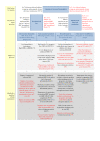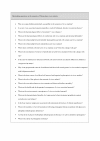The anaemia of Plasmodium vivax malaria
- PMID: 22540175
- PMCID: PMC3438072
- DOI: 10.1186/1475-2875-11-135
The anaemia of Plasmodium vivax malaria
Abstract
Plasmodium vivax threatens nearly half the world's population and is a significant impediment to achievement of the millennium development goals. It is an important, but incompletely understood, cause of anaemia. This review synthesizes current evidence on the epidemiology, pathogenesis, treatment and consequences of vivax-associated anaemia. Young children are at high risk of clinically significant and potentially severe vivax-associated anaemia, particularly in countries where transmission is intense and relapses are frequent. Despite reaching lower densities than Plasmodium falciparum, Plasmodium vivax causes similar absolute reduction in red blood cell mass because it results in proportionately greater removal of uninfected red blood cells. Severe vivax anaemia is associated with substantial indirect mortality and morbidity through impaired resilience to co-morbidities, obstetric complications and requirement for blood transfusion. Anaemia can be averted by early and effective anti-malarial treatment.
Figures



References
Publication types
MeSH terms
Substances
Grants and funding
LinkOut - more resources
Full Text Sources
Medical

